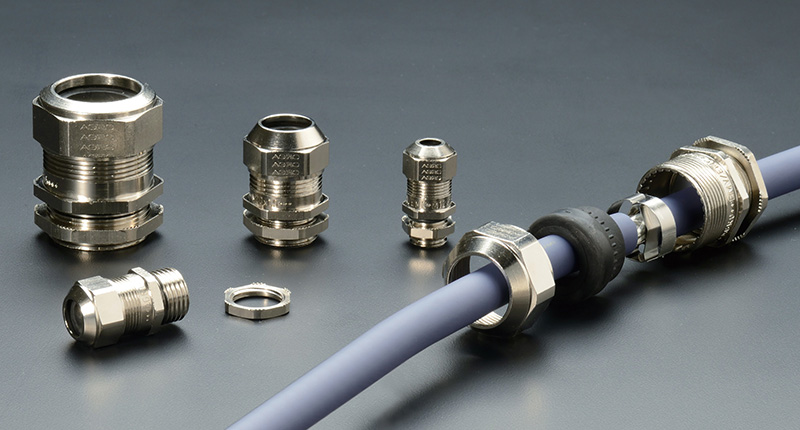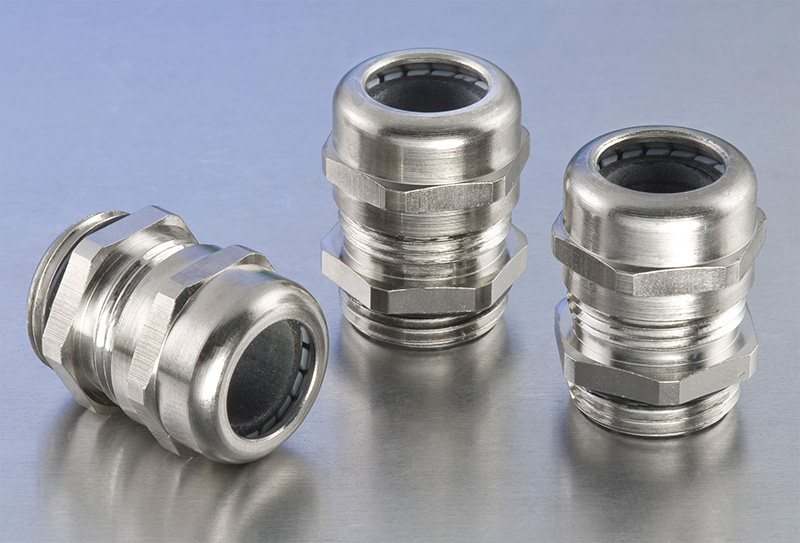Cable Gland Types According to Different Applications
There are many types of cable glands available for different applications. Depending on the application, some common cable gland types include:
Instruments Cable Gland
Instrument cable glands are critical components in any industrial or commercial environment where instrumentation and electrical systems are deployed. Its main purpose is to provide a safe and reliable connection between instruments and cables, ensuring efficient transmission of signals and preventing any potential hazards such as short circuits or cable damage.
Cable glands are typically made from durable materials such as brass, stainless steel or nickel-plated brass, ensuring they can withstand harsh environmental conditions including moisture, dust and temperature fluctuations. It consists of a gland body with a threaded entry point, allowing cables to be securely connected to instruments or equipment.
One of the key features of a quality instrument cable gland is its ability to provide a water and dust-proof seal. Not only does this protect the cable from any external elements, it also helps maintain the integrity of the signal being transmitted. Additionally, some cable glands are designed with strain relief to prevent excessive stress on the cable, thereby extending its service life.
Electrical Cable Gland
Cable glands are an important part of the electrical engineering and installation world. It is a device used to connect and secure cables to equipment or enclosures while also providing protection against the ingress of dust, moisture, and other environmental factors. The main purpose of cable glands is to ensure a safe and reliable connection between cables and equipment, preventing any potential damage or danger.
Cable glands are available in a variety of designs and materials to suit different applications and environmental conditions. Commonly used materials include brass, stainless steel, and plastic, each with different properties and levels of durability. The choice of material depends on factors such as the level of protection required, the type of cable used and the surrounding environment.
Marine Cable Gland
Marine cable glands are important components used in the offshore and marine industries to ensure the integrity and safety of underwater cable systems. It provides a watertight seal around cable entry points, preventing water ingress and protecting cables from damage caused by corrosion, abrasion and other environmental factors.
Marine cable glands are specifically designed to withstand the harsh conditions encountered in the marine environment, including exposure to salt water, extreme temperatures and high pressures. It is usually made from corrosion-resistant materials such as stainless steel or brass, and can be coated with an additional layer of protection to enhance its durability.
In addition to their primary function of providing a waterproof seal, marine cable glands also help to relieve cable tension and prevent the cable from being pulled or twisted. It also provides a level of electromagnetic interference (EMI) protection and ensures that the cable is properly grounded.
Motor Cable Gland
Motor cable glands are important components in electrical systems that help secure and protect cables entering the motor housing. Its primary function is to provide a seal around the cable entry point, preventing the entry of moisture, dust, and other contaminants that can damage the motor and affect its performance.
Motor cable glands are designed to withstand harsh operating conditions, including extreme temperatures, vibration and exposure to chemicals. These glands are typically made from high-quality materials such as brass, stainless steel, or aluminum, ensuring durability and corrosion resistance.
Industrial Cable Gland
Industrial cable glands are critical components in any electrical or mechanical system that requires safe and reliable connections. It is specifically designed to provide strain relief, sealing and grounding for cables or wires passing through enclosures or panels.
The main function of industrial cable glands is to ensure that cables are connected safely and reliably to the equipment or systems to be used. This is achieved by using a threaded connection that allows the cable to be securely attached to the gland. The gland is then installed onto the housing or panel, creating a water and dust-tight seal.
In addition to providing a secure connection, industrial cable glands also provide strain relief. This is important because cables can be subject to various forms of stress, such as movement, vibration, or tension. Glanding helps spread stress along the cable, preventing damage or breakage.
Additionally, industrial cable glands often provide a grounding function. This is critical in applications where electrical equipment or systems need to be properly grounded to ensure the safety of personnel and equipment. The gland can be designed to allow for the connection of a grounded conductor, which helps dissipate any charge or static electricity that may have accumulated in the system.









